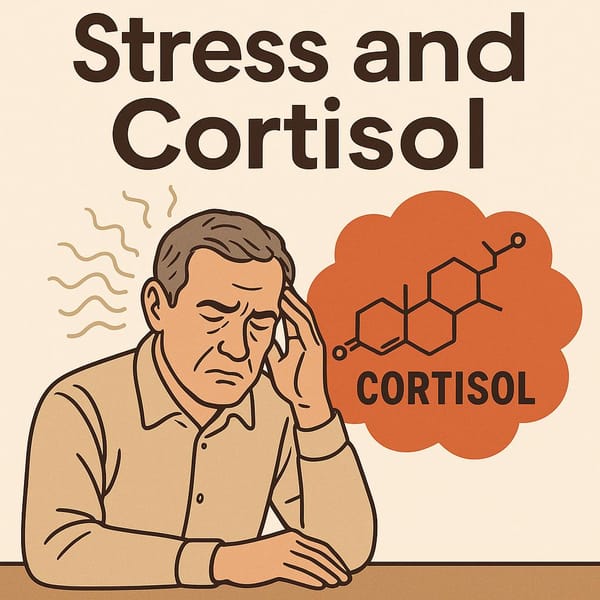10 Simple Exercises to Strengthen Joints and Tendons
Discover how to reinforce your joints and tendons, particularly for individuals aged 50 and above. These exercises help reduce injury risks and boost confidence in daily movement.

Introduction
As we age, many people experience weaknesses or degenerative changes in their joints and tendons, leading to pain, stiffness, or a higher risk of injury. Whether it’s knee pain, back pain, or shoulder inflammation, these issues can affect your quality of life and daily activities. However, consistent and proper exercise can significantly enhance the strength of your joints and tendons, reduce injury risks, and keep your body strong, flexible, and healthy in the long run.
This article will guide you through the fundamentals of why exercise is beneficial for joint and tendon health, especially for people 50 and older who may already face age-related deterioration. We will also explore how to adapt your workouts for your fitness level and provide tips to avoid injuries, helping you maintain an active and fulfilling lifestyle.
Understanding Joints and Tendons
Before diving into exercises that support joint and tendon health, it’s essential to understand the basic structure and function:
- Joint: The place where two or more bones meet, allowing the body to move in different directions and angles (e.g., knees, hips, and shoulders).
- Tendon: The tissue that connects muscle to bone, transmitting the force generated by muscle contraction to the skeleton.
- Ligament: The tissue that connects bone to bone, providing stability to the joint and preventing excessive movement.
- Cartilage: A tissue found at the end of bones that reduces friction during movement and prevents bone-on-bone damage.
As we age, our muscles lose mass, and our ligaments and cartilage may lose flexibility. Regular, targeted exercise can stimulate new tissue growth, increase blood flow to these areas, supply essential nutrients, and support the body’s natural repair processes.
Benefits of Exercises for Joints and Tendons
- Reduced Injury Risk: Strengthening your tendons and joints helps them better withstand stress, minimizing the risk of falls or overuse injuries.
- Improved Flexibility: Regular exercises help maintain a full range of motion in the joints, preventing stiffness.
- Slowed Degeneration: Although age-related changes are inevitable, exercise can slow the degeneration of joints and tendons by promoting healthy blood flow.
- Enhanced Balance: Stronger muscles and tendons contribute to better stability, which is crucial for preventing slips and falls in older adults.
- Pain Relief: Low-impact exercises can alleviate joint pain because improved joint health reduces inflammation and friction.
- Better Quality of Life: Healthy joints and tendons allow for smoother daily movements—like walking, standing, or lifting objects—leading to more enjoyment and independence in everyday tasks.
Getting Started for 50+
Individuals who are older or new to exercise should consider the following:
- Consult a Doctor: If you have underlying health issues (e.g., high blood pressure, diabetes, or heart disease), consult a medical professional before starting any new exercise program.
- Start Slowly: Avoid pushing yourself too hard in the beginning. Focus on simple exercises and gradually increase intensity.
- Schedule Your Workouts: Aim for 3–5 days of exercise per week, 20–30 minutes each session. Consistency is key.
- Warm Up: Spend 5–10 minutes warming up to stimulate blood flow and prepare the muscles, joints, and tendons.
- Cool Down: End your workouts with 5–10 minutes of stretching or low-intensity activity to help your heart rate return to normal.
- Listen to Your Body: If you feel pain or discomfort, stop and seek professional advice. Overexertion may lead to injuries.
- Focus on Safety: Wear supportive footwear, choose comfortable clothing, and use a clutter-free space to exercise.
10 Exercises to Strengthen Joints and Tendons
Below are 10 exercises suitable for anyone looking to reinforce their joints and tendons, including older adults or those who haven’t exercised rigorously in a while.
1. Walking
- Type: Low-impact cardio
- Ideal for: Beginners of all ages
- Benefits: Builds leg and core muscle strength, promotes knee and ankle joint mobility without excessive impact.
- How to:
- Start with a slow, 5-minute warm-up walk.
- Increase to a moderate pace for 10–20 minutes (or based on comfort).
- Alternate between slower and faster paces if necessary.
- Gradually increase speed or duration over time.
- Tips:
- Wear supportive walking shoes.
- Maintain good posture and avoid overly long strides.
2. Calf Raises
- Type: Strengthening the calf and ankle area
- Benefits: Strengthens tendons around the ankles, reducing the risk of ankle sprains.
- How to:
- Stand upright, keeping your back straight while holding onto a wall or chair for balance.
- Slowly lift your heels off the floor, rising onto your toes.
- Pause for 1–2 seconds, then lower your heels back down.
- Repeat 10–15 times; do 2–3 sets with 30 seconds of rest in between.
- Tips:
- Control your movements; do not rush.
- Stand close to a wall if you have trouble balancing.
3. Chair Squats
- Type: Bodyweight exercise
- Ideal for: Those needing extra balance support
- Benefits: Strengthens thigh, knee, and hip areas, helping reduce falls.
- How to:
- Sit on a chair of moderate height with feet flat on the floor.
- Keep your torso straight, engage your core and glutes.
- Push through your heels to stand up slowly.
- Gently sit back down. Repeat 10–15 times.
- Tips:
- Keep your knees behind your toes to reduce knee stress.
- If knees ache, reduce reps or use a higher chair.
4. Straight Leg Raises
- Type: Strengthening the front thigh and knee tendons
- Benefits: Stabilizes knees and can alleviate pain in individuals with knee issues.
- How to:
- Lie on your back on a mat or firm surface.
- Fully extend one leg, contract the front thigh muscle, then raise the leg about 12 inches (30 cm).
- Pause for 1–2 seconds before lowering it slowly.
- Do 10–15 reps; repeat on the other side.
- Tips:
- Engage your core to protect your lower back.
- If you feel knee or hip pain, reduce the leg height.
5. Hamstring Stretch
- Type: Stretching
- Benefits: Reduces tightness in the hamstring tendons, which can affect back and knee health.
- How to:
- Sit on the floor with both legs straight out.
- Slowly lean forward, reaching for your toes or shins.
- Hold for 15–30 seconds, keeping your breathing steady.
- Repeat 2–3 times, resting briefly between stretches.
- Tips:
- Move gently without sudden jerks.
- Reduce the stretch if you feel discomfort in your lower back.
6. Glute Bridge
- Type: Strengthening the core and hips
- Benefits: Reduces strain on the lower back and stabilizes the pelvis.
- How to:
- Lie on your back with knees bent and feet on the floor, hip-width apart.
- Rest arms at your sides, palms down or elbows bent.
- Engage your core and glutes, lifting your hips into a straight line with your shoulders and knees.
- Hold for 2–3 seconds, then lower down.
- Repeat 10–15 times.
- Tips:
- Focus on using your glutes rather than arching your lower back.
- Exhale when lifting, inhale when lowering.
7. Single-Leg Balance
- Type: Balance training
- Benefits: Strengthens ankles, knees, and hips, while improving proprioception.
- How to:
- Stand upright near a wall or chair.
- Lift one foot a few inches off the floor and hold for 10–20 seconds.
- Switch legs; do 2–3 sets.
- Tips:
- Look straight ahead to help stabilize.
- For an added challenge, close your eyes or stand on an uneven surface.
8. Shoulder Stretch
- Type: Stretching the shoulder muscles
- Benefits: Helps prevent frozen shoulder and maintains the shoulder’s range of motion.
- How to:
- Sit or stand up straight.
- Cross one arm in front of your chest or behind your head.
- Gently pull it with the opposite arm until you feel a stretch.
- Hold for 15–20 seconds; switch sides.
- Tips:
- Move slowly, avoiding any jerking motion.
- Use a long towel or strap if needed.
9. Knee Plank
- Type: Isometric exercise
- Benefits: Strengthens core muscles and reduces strain on the lower back.
- How to:
- Lie face down, aligning elbows under shoulders.
- Knees rest on the ground, feet elevated if comfortable.
- Engage your abs, maintaining a straight line from shoulders to knees.
- Hold for 15–30 seconds, rest 10 seconds, then repeat.
- Tips:
- Breathe steadily throughout.
- Lower the duration or adjust elbow position if you feel pain in your lower back.
10. Stationary Bike
- Type: Low-impact cardio
- Benefits: Works the hips and knees gently while engaging leg muscles.
- How to:
- Adjust the seat so your leg is almost straight when pedaling.
- Pedal lightly for 5 minutes to warm up.
- Increase resistance slightly and pedal for 10–20 minutes.
- Cool down with 5 minutes of slow pedaling.
- Tips:
- Watch the resistance level to avoid knee pain.
- Vary speed and resistance to build endurance gradually.
Sample Weekly Workout Schedule
Here’s an example schedule that can be adjusted based on your fitness level:
- Monday: Brisk walking (20 minutes) + Chair Squats (3 sets of 10 reps)
- Tuesday: Stationary bike (15–20 minutes) + Single-Leg Balance (3 sets, each leg 10–20 seconds)
- Wednesday: Rest day or light activity like yoga
- Thursday: Calf Raises (3 sets of 15 reps) + Straight Leg Raises (2 sets of 10–15 reps per leg)
- Friday: Brisk walking (20 minutes) + Glute Bridge (3 sets of 10 reps)
- Saturday: Knee Plank (2 sets, 15–30 seconds each) + Shoulder Stretch + Hamstring Stretch
- Sunday: Rest or gentle swimming
Adjust the intensity and duration to match your capabilities. If you experience pain or inflammation, consult a healthcare professional.
Tips for Resistance Training Over 50
While resistance training (using weights or bands) can help you build muscle and strength, it’s crucial for people over 50 to be mindful of their joint and tendon health due to slower recovery times. Below are some guidelines:
- Choose Appropriate Weights: Start with lighter weights, focusing on moderate repetitions rather than lifting very heavy weights. If you experience pain in your joints or tendons, consider lowering the weight.
- Prioritize Proper Form: Even slight errors in movement can place excessive stress on shoulders, knees, or wrists. If you’re unsure, consult a certified trainer or physical therapist.
- Warm Up Thoroughly: Proper warm-ups are critical. Perform gentle movements or light sets to prepare your joints and tendons.
- Progress Gradually: Increase weights and resistance slowly to allow time for adaptation and reduce injury risks.
- Strengthen Your Core: A strong core reduces stress on peripheral joints like shoulders and knees and improves overall balance.
- Be Careful with High-Load Exercises: Exercises like bench presses or overhead presses can put a lot of strain on the shoulder joints. Consider using machines or lower weights initially.
- Rest Adequately: Joints and tendons in older adults generally need more time to recover. Allow enough rest days between sessions targeting the same muscle groups.
- Use Supportive Gear: Wrist wraps or weightlifting belts may reduce joint stress, but don’t rely on them entirely. Focus on proper muscle engagement.
- Monitor Unusual Pain: If you experience joint or tendon pain during a lift, stop immediately. Continuing can exacerbate the issue.
- Eat Nutrient-Dense Foods: Protein, calcium, collagen, and omega-3 fatty acids all aid in tissue repair. A balanced diet supports optimal results.
Nutrition for Joint Support
Exercise is only part of the equation—your diet matters too. Certain nutrients can help enhance joint health:
- Protein: Supports muscle and tendon repair (e.g., fish, poultry, eggs, beans).
- Omega-3: Reduces inflammation (e.g., salmon, tuna, sardines).
- Vitamin D & Calcium: Builds strong bones (e.g., dairy products, leafy greens, small-boned fish).
- Collagen: Some studies suggest collagen supplements may help with knee pain.
- Fresh Fruits & Vegetables: High in antioxidants and essential vitamins.
Precautions and Warnings
- Modify as Needed: Don’t push beyond your limits.
- Allow Proper Recovery: Rest days are just as important as workout days.
- Watch for Warning Signs: If you experience swelling, redness, or severe pain, stop and consult a doctor.
- Use Support if Necessary: Knee braces or orthopedic shoes can help reduce stress on problematic joints.
- Seek Professional Advice: Working with a physical therapist or exercise specialist can provide personalized guidance.
Staying Motivated and Consistent
- Set Clear Goals: For example, aim to walk 10,000 steps a day or complete 15 Chair Squats.
- Find a Workout Buddy: Social support encourages adherence.
- Track Your Progress: Note your workouts, durations, and improvements.
- Reward Yourself: Treat yourself to a favorite (healthy) snack, a movie, or new fitness gear when you achieve your targets.
Conclusion
Joint and tendon health is a cornerstone of overall well-being, especially for those aged 50+. Starting an exercise routine that focuses on proper techniques and consistent progression can significantly boost joint stability and tendon strength. Combine this with a nutrient-rich diet, sufficient rest, and a keen awareness of any signs of strain or injury to maintain a pain-free, active lifestyle.
Remember: Seeking professional advice is never a bad idea, especially if you have specific health concerns. With healthy joints and tendons, you can move more confidently through your daily life, maintaining independence and enjoyment in every activity.
External Link
Mayo Clinic – Additional Information on Knee Health (A trusted source for health-related information)
Note: The content in this article is based on scientific research and expert recommendations. Always use personal judgment and consult with a healthcare provider if you have underlying medical conditions.
May this article serve as a helpful guide for older adults seeking safe and effective ways to strengthen their joints and tendons—reducing the risk of injury and enhancing overall well-being.



